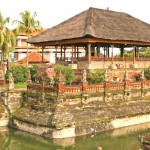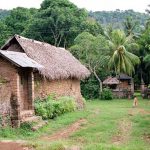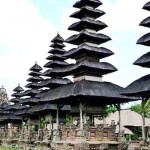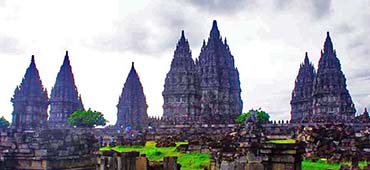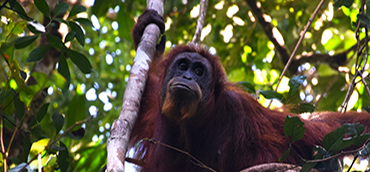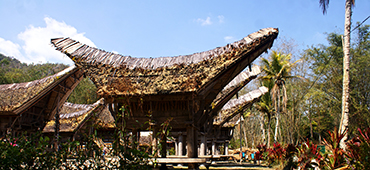The Eternal Battle Between Good and Evil
Bali is renowned worldwide for its magnificent beaches, amazing rice terraces, picturesque temples, arts and crafts, and for the colorful Hindu-Buddhist culture of the Balinese people. For the deeply religious Balinese, every aspect of life is governed by ancient rituals, and shrines with offerings to the gods are seen everywhere throughout the island. Bali is both a paradise and a playground; home to a whole host of activities, adventures, stories and magical secrets just waiting to be explored. It is not only for sustenance of the body, but also for the mind and spirit.
The Barong Dance is among the many art forms closely associated with spirituality; it is often performed in ritual ceremonies. Portraying the classic battle of “Good vs. Evil”, the dance is one of the most well-known and loved on the island.
Barong Dance
In Balinese mythology, Barong is a prominent character taken the form of a lion, regarded as the King of the Spirits who represents Virtue. Barong is seen as ‘a guardian angel’. Opposing Good is represented by another mythical creature called Rangda (‘widow’ in Javanese), the Queen of Demons. Rangda leads an army of evil witches against the leader of the forces of Good. As a mirror of life, the Barong Dance portrays the two characters involved in a never-ending battle.
 Similar to Sanghyang Dance, the Barong Dance is native to the Balinese culture that predates back to Hinduism. Barong is covered in white thick fur, adorned with gold jewelry and pieces of mirrors. Just like the Chinese Lion Dance, Barong involves two people dancing in synchronized movements to portray the lion in action.
Similar to Sanghyang Dance, the Barong Dance is native to the Balinese culture that predates back to Hinduism. Barong is covered in white thick fur, adorned with gold jewelry and pieces of mirrors. Just like the Chinese Lion Dance, Barong involves two people dancing in synchronized movements to portray the lion in action.
In the dance drama called Calon Arang, Barong emerges to counteract Rangda’s use of magic to control the world. The men will fight each other with kris daggers, but upon the appearance of Barong, they turn their kris and stab themselves. The performers get into a trance state. Barong then defeats Rangda, thus restoring balance in nature. Meanwhile, the tranced men are reincarnated by the sprinkle of holy water.
Balinese people believe each region has its own protective spirit for its forests and lands. For each region, Barong is modeled after a different animal. Barong Ket (Lion Barong) is the most common type found in almost every part of the Island. While Barong Buntut is a type of Barong which only features its front, usually performed by a single dancer. Other types of Barong include Barong Landung (Giant Barong), Barong Celeng (Boar Barong), Barong Macan (Tiger Barong), Barong Naga (Dragon/Serpent Barong).
Regular Barong dance performances can be found in many places in Bali, however, the most popular are performed by the Batu Bulan villagers in the district of Gianyar, or at Kesiman, Denpasar.
The myth of Barong vs Rangda
Barong is a character in Balinese mythology. He is the king of spirits and symbolizes goodness. He is Rangda’s enemy in Balinese mythology. Banas Pati Rajah is a spirit that accompanies a child in his life. Banas Pati Rajah is believed to be the spirit that moves Barong. As a protective spirit, Barong is often shown as a lion. Traditional dances in Bali that depict the battle between Barong and Rangda are very well known and are often shown as tourist attractions.
Barong lion is one of the five forms of Barong. On the island of Bali every part of the island of Bali has a protective spirit for its land and forests. Each Barong form representing a particular area is described as a different animal. There are wild boar, tiger, snake or dragon, and lion. The form of Barong as a lion is very popular and originates from Gianyar. Here lies Ubud, which is a famous tourist spot. In Calonarong or Balinese dances, Barong uses his magic to defeat Rangda.
 Rangda is the queen of the Leaks (an Evil Witch) in Balinese mythology. This scary creature is said to often kidnap and eat small children and lead an army of evil witches against Barong, which is a symbol of good power.
Rangda is the queen of the Leaks (an Evil Witch) in Balinese mythology. This scary creature is said to often kidnap and eat small children and lead an army of evil witches against Barong, which is a symbol of good power.
In Balinese mythology, Leak is an evil witch. Le means witch and ak means evil. Leak can only be seen at night by the leak hunter shamans. During the day he looks like an ordinary human, while at night he is in the cemetery to search for the organs in the human body that he uses to make magic potions. The magic potion can change the shape of the leak into a tiger, monkey, pig or become like Rangda. If necessary, it can also harvest organs from a living person.
It is also told that Leak can be a human head with the organs still hanging from the head. Leak is said to be able to fly to find pregnant women, to then suck the blood of the unborn baby. There are three well-known Leaks. Two of them are women and one is a boy.
According to Balinese belief, Leaks are ordinary humans who practice evil magic and need embryonic blood in order to live. It is also said that the leak can transform itself into a pig or a fireball, while the real form of leak has a long tongue and sharp teeth. Some people say that Leak magic only works on the island of Bali, so that Leak is only found in Bali.
If someone stabs the neck of the Leak from below towards the head when the head is separated from the body, the Leak cannot reunite with the body. If the heads are separated for a certain period of time, the Leak will die.




